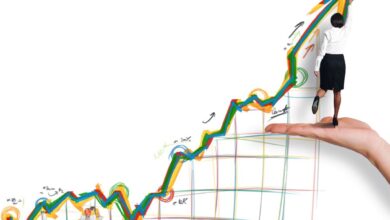The Evolving Landscape of Index Funds and ETFs Amidst Market Dynamics

The financial landscape is undergoing a transformative shift as passive investing strategies, notably index funds and Exchange-Traded Funds (ETFs), gain momentum. These instruments are becoming the preferred choice for their cost-effectiveness and adaptability. A Wall Street Journal report has underscored this trend, revealing that index funds now represent a substantial two-fifths of all fund investments, a figure that has impressively doubled over the past decade. This shift is a stark contrast to the performance of active funds, which, as per a Morningstar study, have frequently lagged behind their passive counterparts over a similar period.
ETFs have seen a surge in popularity around the world, with Europe standing out for its robust growth despite stringent regulations. This year, major financial institutions in Europe have expanded their offerings, with JPMorgan launching two ETFs focused on environmental, social and governance (ESG) investing. The move is in line with Europe’s commitment to reducing carbon emissions and comes at a time when ESG ETFs in the US and other regions are experiencing a downturn. Nevertheless, the European ESG ETF sector continues to show encouraging trends.
The competitive environment of index funds has sparked what industry observers call “fee wars,” which have benefited users of these financial products. In an effort to remain competitive and attract new inflows, firms are lowering their fees. One notable example is State Street’s strategic decision to reduce the fee on its SPDR Portfolio S&P 500 ETF to an exceptionally low 0.02%. This bold pricing tactic has been rewarded with significant inflows, such as the SPDR Portfolio High Yield Bond ETF, which attracted $611 million in a single month after the fee cut.
Market volatility has been a defining characteristic of the financial markets, with the COVID-19 pandemic causing a market crash and subsequent rapid rise in stock values, including the rise of meme stocks. The initial enthusiasm was tempered by the Federal Reserve’s actions to curb runaway inflation, which led to higher interest rates and a shift away from growth stocks. More recently, burgeoning interest in artificial intelligence has led to a surge in investment in AI stocks, with analysts urging caution about a possible tech bubble.
The capricious nature of financial markets underscores the importance of portfolio diversification. Index funds and ETFs serve as vehicles to spread risk across a variety of assets, providing a hedge against market volatility. As the investment landscape continues to evolve, the importance of these financial instruments in helping individuals navigate economic uncertainties is becoming more pronounced. The move toward passive investing through index funds and ETFs reflects the evolving dynamics of the financial markets. Aggressive fee reductions by firms underscore the value proposition of these products. Against the backdrop of market volatility and economic shifts, the role of index funds and ETFs in enhancing portfolio diversification has become more important.
Source link



